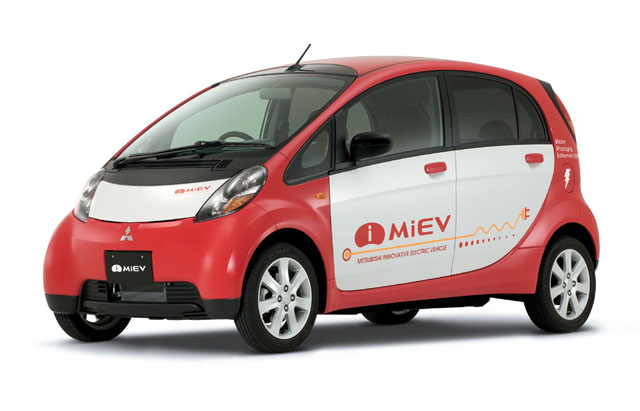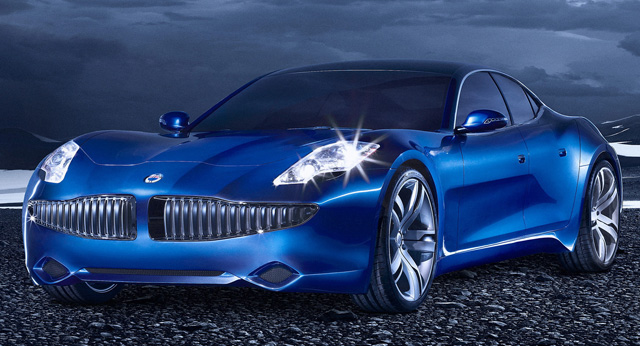Pike Research Finds Interest in PEV Declines in Past Two Years
2012/04/06 | By Quincy LiangThe year 2011 marked the dawn of the global plug-in electric vehicle (PEV) market, with three new models having been launched for retail sales: the Nissan Leaf, Chevrolet Volt and Mitsubishi iMiev. With Nissan, Chevrolet and Mitsubishi and many other carmakers working to electrify new models, and Toyota having launched the PEV Prius in January this year, the year 2012 will be an important test of commercial viability of PEVs.

A PEV is any motor vehicle that is recharged from any external source of electricity, such as wall sockets, and the electricity stored in the rechargeable battery packs drives or contributes to drive the wheels. PEV is a subcategory of electric vehicles (EVs) that includes all-electric or battery electric vehicles (BEVs), plug-in hybrid vehicles (PHEVs), and electric vehicle conversions of hybrid electric vehicles and conventional internal combustion engine (ICE) vehicles
Some 35,000 of the three above-mentioned models were sold in 2011, turning the global EV market from nascent to fledgling, despite sales being below expectations.
The Nissan Leaf led in 2011 in its segment with 19,057 units sold globally (as of the end of November 2011), compared to Volt's 7,671 and iMiev's 3,605 units, according to statistics compiled by Taiwan's Automotive Research & Testing Center (ARTC), which attributes such modest sales to mainly relatively higher prices, concerns for safety and lack of recharging infrastructure etc.
Declining Consumer Interest
As public awareness of EVs continues to build with more models launched, a new survey by Pike Research, a market research and consulting firm that provides analysis of global clean technology markets, finds that consumer interest in purchasing PEVs has gradually declined over the past two years.
In late 2011, the Pike conducted the third annual Electric Vehicle Consumer Survey using a nationally representative and demographically balanced sample of 1,051 adults in the United States. In the first edition conducted in 2009, 48% of respondents stated that they would be “extremely” or “much” interested in purchasing a PEV. In 2010 that number declined moderately to 44% and in 2011 it fell further to 40%.

“Price is the most significant barrier to consumer interest in electric vehicles,” says Pike Research's research director John Gartner. “About two-thirds of our survey respondents who stated they would not be interested in purchasing a PEV said that they felt such a vehicle would be too expensive. Others said that they would want to wait a few years until the technology is more proven, and almost half said that a PEV would not have sufficient driving range for their needs. These are all key issues, both real and perceived, that automakers will need to address if PEVs are to move successfully out of the early adopter phase.”
Brand Influence
The survey also concluded some other key findings. According to Pike Research, survey respondents stated that they would be most likely to choose Toyota (51%) and Ford (46%) when considering a PEV purchase, even though these two automakers did not have PEVs on the market at the time of the survey being conducted. Honda ranked third with 44%, followed by Chevrolet with 42% and Nissan with 35%. Then, there are ample reasons to believe that the brand images of internal combustion engine (ICE) cars are also broadly affecting consumers' PEV purchases.
The research firm also points out that in the survey, consumers are willing to pay a premium for PEVs, just not as much of a premium as automakers must charge during the next few years due to the cost of batteries. Pike Research's price sensitivity analysis indicates that for a traditional gasoline vehicle that would ordinarily cost US$20,000, the optimal price point of a comparable PEV would be US$23,750 – a premium of 18.75%. Price sensitivity has been one of the most important key factors affecting the EV market, and most industry experts deem that existing battery technology does not justify PEVs carrying similar prices as ICE vehicles for at least several years. Plus government's subsidization policies and public EV-charging infrastructure are even more important if any nation wants to popularize PEVs in the near future.
The other major finding in the survey shows that the interest in residential fast-charging equipment is high, with 80% of consumers interested in a PEV stating that they would also be interested in such a unit in their home. However, pricing is once again an issue – while Pike Research's analysis suggests that the first generation of residential fast-charging equipment will cost between US$500 and US$800, only 28% of survey respondents stated that they would be willing to pay US$500 or more.
In addition, survey respondents expressed strong interest in smartphone applications that would provide useful information on the status of their PEV. The most popular feature was identifying the location of the nearest charging station (84%), followed by battery state of charge information (82%), electricity pricing data (76%), and the ability to schedule stop/start times for PEV charging (68%), Pike Research's survey shows. This survey finding can explain why different automakers, such as Ford and Kia, unveiled their new EV models at the just-ended Consumer Electronics Show (CES) in January 2012 in Las Vegas.
Due to weak sales of PEVs, major research institutes have in turn reduced forecasts for 2012 global EV sales. Morgan Stanley, for example, has lowered 2012 forecast of EV penetration to 4.5% from 8.6%.




